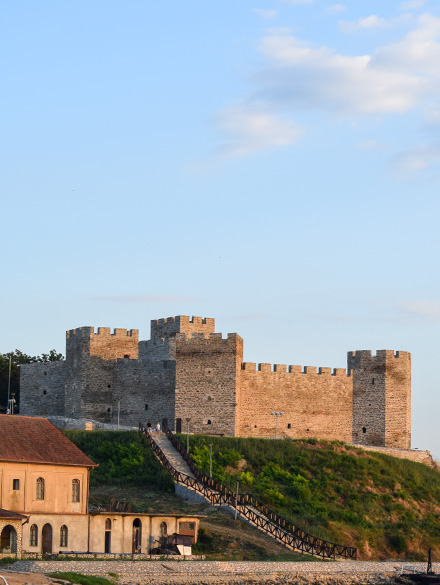Pearls of Danube and Iron Gates
Golubac Fortress
No one can say for sure who and when, at the entrance to the Djerdap Gorge, erected the Golubac Fort. It is first mentioned in written sources in 1335 as a fortress in which the Hungarian army is located, so it is assumed that it was founded before, probably in the late 13th or early 14th century.
Medieval fortification Golubac Fortress
The Golubac Fortress is a medieval fortress built at the entrance to the Djerdap Gorge, a naturally fortified place from which all land and water routes that connected east and west could be easily controlled. It is first mentioned in written sources in 1335 as a fortress that already housed the Hungarian army, which would mean that it was founded before that. Who and when built the fort is not known for sure. It is known, however, that in the medieval maps its name was written in different languages (Galambas, Galambocz, Colombazo, Columbaz, Columbarum, Taubersburg, Tawbenstein, Peristerin, Giwerdzinlik) and that in every word “the dove”/pigeon forms the basis. Legend has it that the Ottoman commander of the city fell in love with the beautiful Golubana, who at no cost wanted to join his harem. In order to repent, she was punished by being tied to a rock in the Danube, on which she died. The fortress was named after the princess – Golubac, and the rock that still extends from the Danube today is Baba kaj (tur. Repent). The reconstructed Golubac Fortress with its nine towers connected by ramparts, a palace, an archeological park containing the Roman House, the hammam of Kodza Mahmud Pasha and the medieval limestone, and a modern visitor center is a one of those must-see places.
Make sure you stop by
If you are traveling to this location and need some rest, these are the places we recommend. You will surely have a nice rest and relax with top quality food, excellent service and enjoy in a wonderful view of the widest part of the Danube.
Activities
Info
- Tourist organizations
- Tourist agencies
- Manifestations
- Friends of the project
- Privacy Policy






























